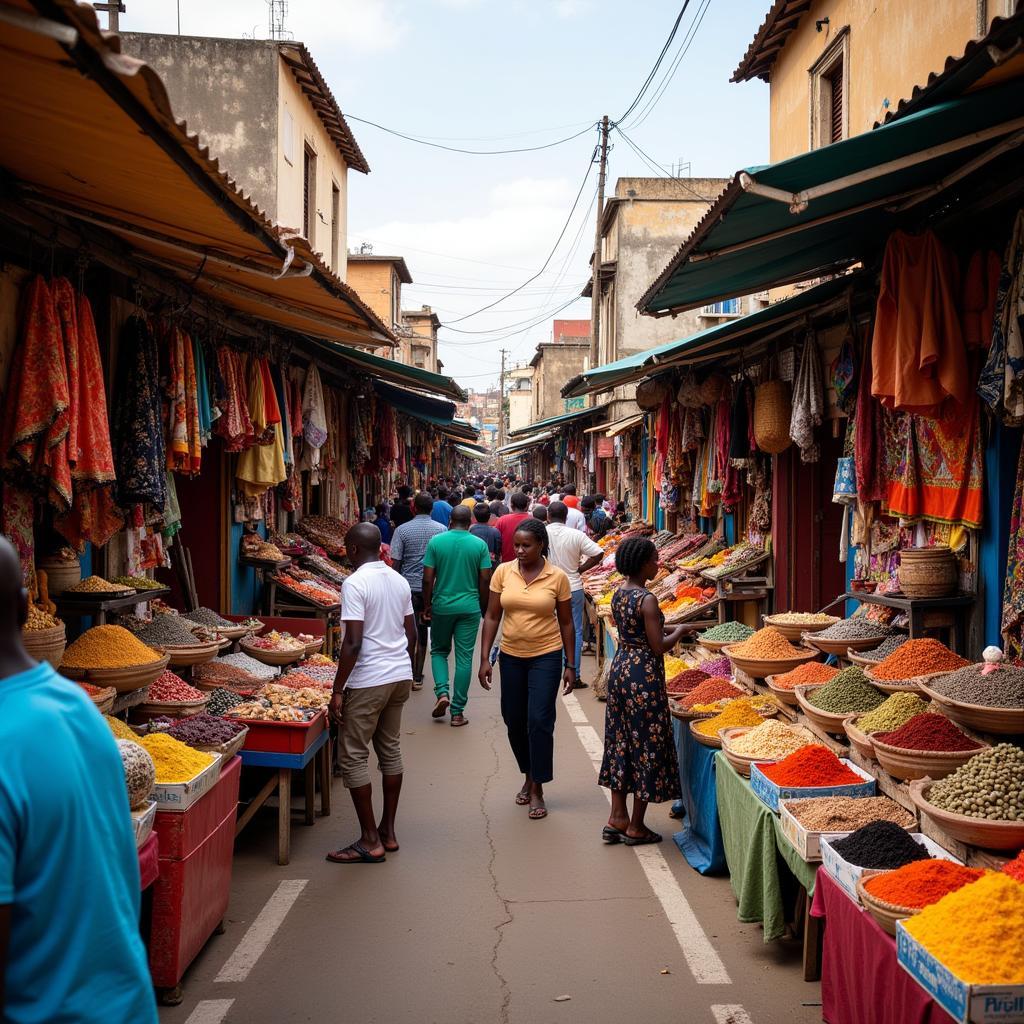Discovering the Magic of African Dot Art
African Dot Art, also known as pointillism, is a captivating art form deeply rooted in the rich cultural heritage of various African communities. It’s a mesmerizing blend of tradition and creativity, using small dots to create intricate patterns and tell compelling stories. From ancient rock paintings to contemporary canvases, African dot art continues to fascinate art enthusiasts worldwide. We’ll explore its history, symbolism, techniques, and its enduring influence on modern art.
African dot art originated centuries ago, initially adorning the walls of caves and rocks across the continent. These early dot paintings served as visual narratives, depicting scenes of daily life, spiritual beliefs, and the natural world. Over time, the practice evolved, finding its way onto various surfaces like pottery, textiles, and even human skin during ceremonies and rituals. Different tribes and regions developed their own distinct styles, each with its unique symbolism and significance. The art form signifies more than just aesthetics; it represents a powerful form of communication, passing down knowledge, beliefs, and stories through generations. It’s an art form that embodies the very spirit of Africa. For instance, some patterns represent ancestral spirits, while others symbolize healing, prosperity, or protection.
Decoding the Symbols in African Dot Art
Understanding the symbolism within African dot art opens a window into the rich tapestry of African cultures. Dots aren’t just decorative elements; they hold deep meaning and tell stories without words. Circular patterns often symbolize cyclical concepts like the seasons, life cycles, or the interconnectedness of all things. Concentric circles might represent the ripples of water, radiating outwards from a central point. Triangular patterns, on the other hand, can symbolize strength and stability. The colors used also carry significant weight. For example, red often represents life force and energy, while blue can signify peace and tranquility. Yellow might symbolize joy and happiness, while green can represent growth and fertility. Every color and every combination adds another layer of meaning to the artwork.
Here are some common symbols you might encounter in African dot art:
- Spirals: Representing journey and transformation.
- Crosses: Often symbolizing the intersection of the physical and spiritual realms.
- Animals: Each animal holds its own specific meaning, such as the lion representing strength or the elephant symbolizing wisdom.
The vibrant and intricate patterns found within African dot art often serve a practical purpose, too. For example, dot paintings on houses can have a protective function, warding off negative energies. Similarly, dot patterns on clothing and accessories can signify social status, age, or marital status. Through African Eagle Johannesburg day tours, you can witness firsthand the intricate details of these artistic traditions.
Creating Your Own African Dot Art
Want to try your hand at creating your own African dot art? It’s a relaxing and rewarding process that connects you to a rich artistic tradition. You’ll need a few essential supplies:
- Surface: Canvas, paper, wood, or even a rock.
- Paint: Acrylic paints work well, but you can also experiment with natural pigments.
- Tools: Dotting tools can be purchased, or you can create your own using the end of a paintbrush, a pencil eraser, or even a toothpick.
The technique involves carefully applying dots of paint to create patterns. Start with a simple design and gradually build up complexity. Don’t be afraid to experiment with different colors and combinations. This art form encourages experimentation and personal expression. Remember, each dot contributes to the overall image, much like the individual stories that make up the rich tapestry of African culture.
African Dot Art in the Modern World
African dot art has transcended its traditional roots and gained international recognition. Contemporary artists are incorporating its distinctive style into various mediums, from fashion and interior design to sculpture and digital art. The rising popularity of African dot art has also empowered local artisans, providing economic opportunities and preserving cultural heritage. This renewed interest in the art form has helped sustain traditional practices and ensure that the stories embedded within the dots continue to be shared with the world. You can explore more about African cultural influences in articles like the one about African bush tea.
“African dot art is a testament to the power of human creativity and the enduring legacy of African cultures,” says Dr. Abeni Adebayo, a renowned art historian specializing in African art. “It’s a visual language that speaks across time and continents.”
Conclusion
African dot art is more than just a decorative technique; it’s a profound expression of African culture, history, and spirituality. From its ancient origins to its contemporary interpretations, it continues to captivate and inspire. Explore the mesmerizing world of African dot art, and discover the stories waiting to be told within each meticulously placed dot. If you’re interested in learning more about African culture, you might find the topic of African berry for weight loss congo intriguing.
FAQ
- What is the significance of dots in African art? Dots represent various symbolic meanings, depending on the pattern, color, and cultural context. They can represent anything from ancestral spirits to natural elements.
- What tools are used in creating African dot art? Traditional tools include sticks, bone fragments, and feathers. Modern artists often use dotting tools, paintbrushes, or even toothpicks.
- Where can I learn more about African dot art? Museums, art galleries, and cultural centers often have exhibits showcasing African art. Books, documentaries, and online resources also provide valuable information.
- How has African dot art influenced modern art? Its distinctive style has influenced contemporary artists in various fields, from fashion and interior design to painting and sculpture.
- Can I create my own African dot art? Absolutely! It’s a rewarding and accessible art form for beginners. You can find numerous tutorials and resources online to get started.
- What is the cultural significance of African dot art? It’s a powerful form of visual storytelling, preserving and transmitting cultural knowledge, beliefs, and traditions through generations.
- What are some common motifs found in African dot art? Common motifs include geometric shapes, spirals, animals, and symbols representing natural elements.
You might also be interested in African grassland crossword clue.
When you need assistance, please contact us: Phone: +255768904061, Email: kaka.mag@gmail.com or visit our address: Mbarali DC Mawindi, Kangaga, Tanzania. Our customer care team is available 24/7.


